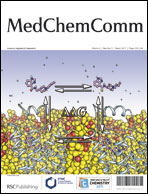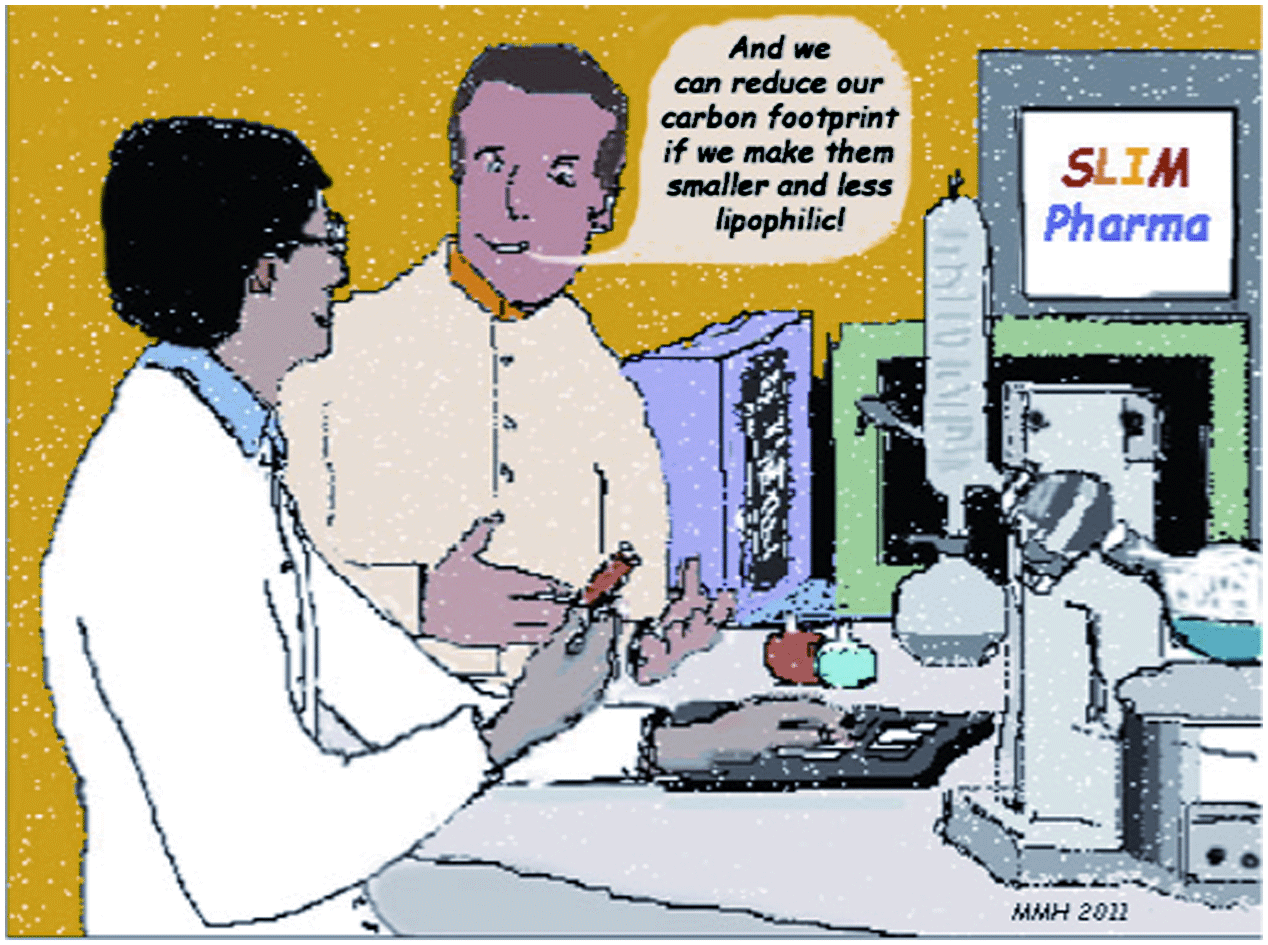This month sees the following articles in MedChemComm that are in the top ten most accessed:-
Impact of ion class and time on oral drug molecular properties
Paul D. Leeson, Stephen A. St-Gallay and Mark C. Wenlock
Med. Chem. Commun., 2011, 2, 91-105, DOI: 10.1039/C0MD00157K, Review
The importance of solvation in the design of ligands targeting membrane proteins
Angel González, Marta Murcia, Bellinda Benhamú, Mercedes Campillo, María L. López-Rodríguez and Leonardo Pardo
Med. Chem. Commun., 2011, 2, 160-164, DOI: 10.1039/C0MD00258E, Concise Article
Chemical space as a source for new drugs
Jean-Louis Reymond, Ruud van Deursen, Lorenz C. Blum and Lars Ruddigkeit
Med. Chem. Commun., 2010, 1, 30-38, DOI: 10.1039/C0MD00020E, Review
Novel, unifying mechanism for aromatic primary-amines (therapeutics, carcinogens and toxins): electron transfer, reactive oxygen species, oxidative stress and metabolites
Peter Kovacic and Ratnasamy Somanathan
Med. Chem. Commun., 2011, 2, 106-112, DOI: 10.1039/C0MD00233J, Review
Boronic acids in medicinal chemistry: anticancer, antibacterial and antiviral applications
Paul C. Trippier and Christopher McGuigan
Med. Chem. Commun., 2010, 1, 183-198, DOI: 10.1039/C0MD00119H, Review
The discovery of a novel prototype small molecule TLR7 agonist for the treatment of hepatitis C virus infection
David C. Pryde, Thien-Duc Tran, Peter Jones, Gemma C. Parsons, Gerwyn Bish, Fiona M. Adam, Mya C. Smith, Donald S. Middleton, Nick N. Smith, Frederick Calo, Duncan Hay, Michael Paradowski, Katie J. W. Proctor, Tanya Parkinson, Carl Laxton, David N. A. Fox, Nigel J. Horscroft, Giuseppe Ciaramella, Hannah M. Jones, Jonathan Duckworth, Neil Benson, Anthony Harrison and Rob Webster
Med. Chem. Commun., 2011, 2, 185-189, DOI: 10.1039/C0MD00197J, Concise Article
Preparation of blood-brain barrier-permeable paclitaxel-carrier conjugate and its chemotherapeutic activity in the mouse glioblastoma model
Juyoun Jin, Woo Sirl Lee, Kyeung Min Joo, Kaustabh K. Maiti, Goutam Biswas, Wanil Kim, Kyong-Tai Kim, Se Jeong Lee, Kang-Ho Kim, Do-Hyun Nam and Sung-Kee Chung
Med. Chem. Commun., 2011, Advance Article, DOI: 10.1039/C0MD00235F, Concise Article
Structure-based design, synthesis, and profiling of potent and selective neuronal nitric oxide synthase (nNOS) inhibitors with an amidinothiophene hydroxypiperidine scaffold
Guyan Liang, Kent Neuenschwander, Xin Chen, Linli Wei, Randall Munson, Gerardo Francisco, Anthony Scotese, Gregory Shutske, Mark Black, Sharkir Sarhan, Jason Jiang, Isabelle Morize and Roy J. Vaz
Med. Chem. Commun., 2011, 2, 201-205, DOI: 10.1039/C0MD00255K, Concise Article
Small molecule modulation of stem cells in regenerative medicine: recent applications and future direction
Timothy E. Allsopp, Mark E. Bunnage and Paul V. Fish
Med. Chem. Commun., 2010, 1, 16-29, DOI: 10.1039/C0MD00055H, Review
Conformational effects on potency of thioimidazoles and dihydrothiazolines
Roland Selig, Verena Schattel, Marcia Goettert, Dieter Schollmeyer, Wolfgang Albrecht and Stefan Laufer
Med. Chem. Commun., 2011, Advance Article, DOI: 10.1039/C0MD00228C, Concise Article
Why not take a look at the articles today and blog your thoughts and comments below. Fancy submitting an article to MedChemComm? Then why not submit to us today or alternatively email us your suggestions.












